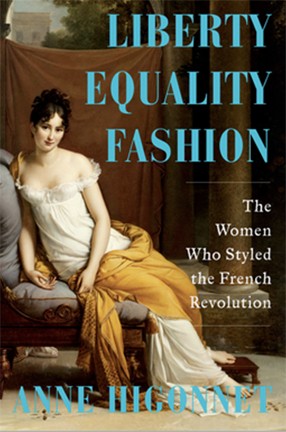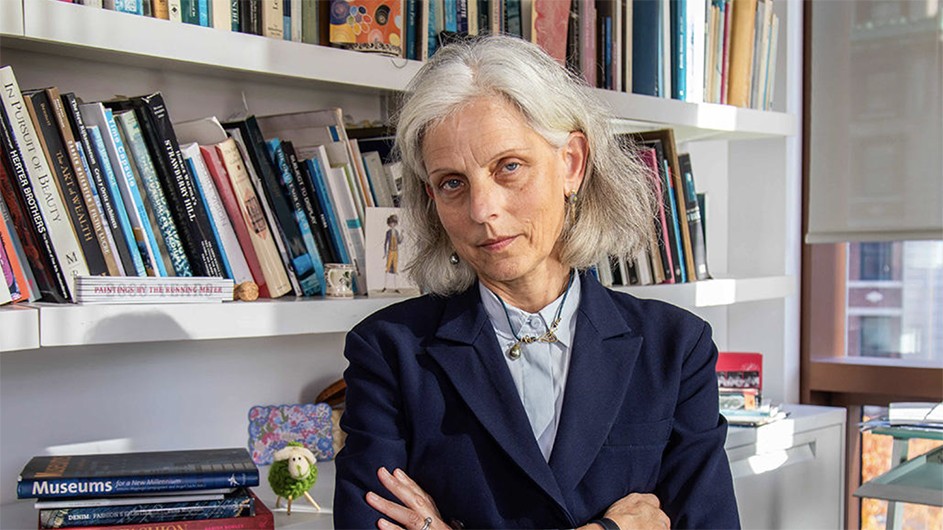What They Wore to the Revolution
Anne Higonnet’s new book profiles three historic French women who led a fashion upheaval.
In 2017, Anne Higonnet, Barbara Novak Professor of Art History at Barnard, was checking footnotes for an essay she was writing when she came across a cryptic catalog entry from the Morgan Library & Museum. It indicated that the Morgan owned a complete set of extremely rare and revolutionary fashion plates on the history of costume.
“Very specialized scholars were unaware of the location of any complete set of these plates, so it seemed unlikely to me,” she said. “But the Morgan is only a subway ride away, so I went to investigate.”
To her astonishment, the museum did indeed have a full set of engravings from the Journal des Dames et des Modes, a groundbreaking Parisian style magazine that began publishing in 1797, after the French Revolution upended European society, including fashion.
The result of Higonnet’s research is Liberty Equality Fashion: The Women Who Styled the French Revolution. In the book, Higonnet examines the lives of Joséphine Bonaparte, future Empress of France; Térézia Tallien, one of the most beautiful women in Europe; and Juliette Récamier, a muse of intellectuals. After surviving incarceration and forced incestuous marriage during the worst violence of the French Revolution of 1789, they dared sartorial revolt. Together, Joséphine and Térézia shed the underwear cages and massive, rigid garments that women had been obliged to wear for centuries. Instead, they wore light, mobile dresses, cropped their hair short, wrapped themselves in shawls, and championed the handbag. Juliette made the new style stand for individual liberty.
Their erotic audacity conquered Europe, starting with Napoleon. Everywhere a fashion magazine could reach, women imitated the news coming from Paris—one of the fastest, most complete changes in clothing history. Two centuries ahead of its time, this fashion revolution was rolled back after only a decade by misogynist rumors of obscene extravagance.
Higonnet discusses her new book with Columbia News, along with her summer reading plans, fashion today, and which clothing designers she would invite for dinner.
How did this book come about?
The book really began in the reading room of the Morgan Library, where I discovered that complete set of very rare fashion plates. As a set, they contradicted some derogatory myths about women’s clothing during the French Revolution, and I decided I wanted to tell the story they taught me.

How did you select the three women you profile in the book?
History found my three heroines for me. As I researched a chronologically organized history of revolutionary fashion, I kept coming across comments on how these women were leading fashion. Finally, I realized that to be truly accurate, I had to put their individuality at the heart of the story.
Do you see any parallels between the fashion-style revolution you describe in the book, and what is happening in today's fashion world?
History doesn’t repeat itself, but the magnitude of a change can. Today we are living through the most important clothing revolution since the one my book is about. Then, the big issue was overthrowing a sumptuary hierarchy based on inherited rank. Today, we are overthrowing dress codes that enforce binary gender, and we need to overthrow wasteful clothing habits that have become unsustainable.
What's the last great book you read, and why?
A new novel by Samantha Harvey, Orbital. In gorgeous yet simple language, it gives readers both a wisely vast perspective on our home planet, and reminders of the intimate connections with each other that make life worth living.
What books do you plan to read this summer?
I plan to read work by my terrific Barnard and Columbia colleagues in our creative writing programs. They are so accomplished, and I want to experience a little bit of what our students learn from them.
Which three fashion designers, dead or alive, would you invite to a dinner party, and why?
Just imagine the style pressure if I could share dinner with three great designers. What would I wear?! I would invite the three who have made me think the hardest about how a person can inhabit clothing with new forms of confidence: Virgil Abloh, Rei Kawakubo (Comme des Garçons), and Phoebe Philo.
